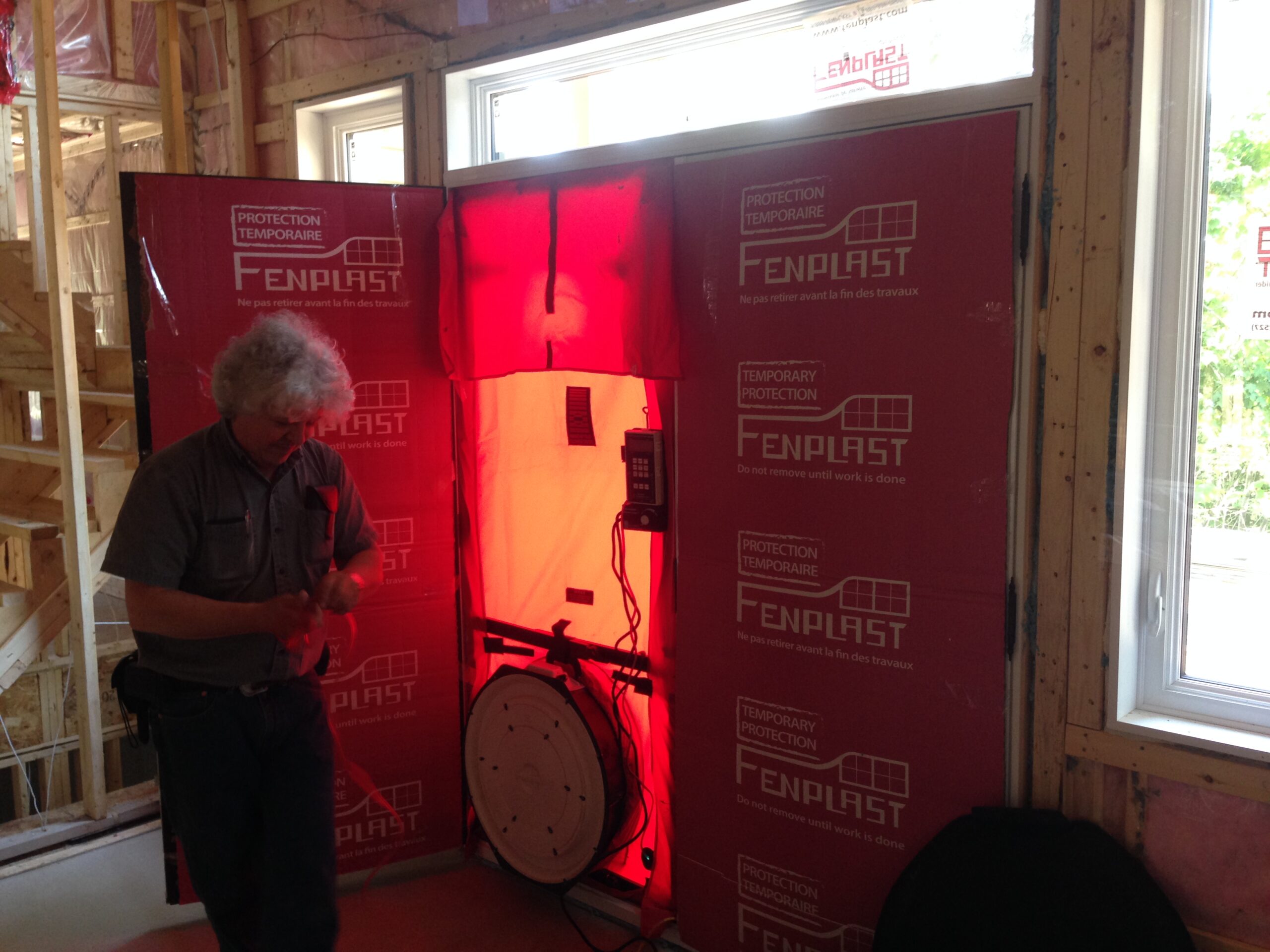Airtightness and energy performance
AIRTIGHTNESS AND ENERGY PERFORMANCE
HEATING AND COOLING ACCOUNT FOR MOST OF A BUILDING’S ENERGY NEEDS IN QUEBEC. IT IS THEREFORE RECOGNIZED THAT INSULATION IS THE MAIN ELEMENT INFLUENCING A BUILDING’S ENERGY PERFORMANCE. BUT WHAT ARE THE KEY ELEMENTS OF GOOD INSULATION? HERE ARE SOME ANSWERS.
Thermal insulation
Thermal insulation limits heat transfer between a hot and a cold environment. A material’s ability to limit heat transfer is quantified by its R factor. The higher the R factor, the more insulating the material. An R30 wall, for example, means that all the materials used together provide a thermal resistance of R30.
Airtightness
While thermal insulation is crucial, it’s not the only essential factor for a building to perform well in our climate. Airtightness is also crucial. There’s no point in building a 12-inch-thick R40 wall if air can come through. Cold air infiltration reduces comfort and increases heating requirements, while warm, humid air exfiltration causes mold, durability and health problems.
It’s for these reasons that the Novoclimat program has insisted from the outset on the importance of constructing an airtight building envelope. It proposes a series of materials and construction techniques, from the concrete basement slab to the roof, to limit energy loss and building damage caused by draughts.

How do you measure a building’s airtightness?
A blower door test involves installing a fan in a door, depressurizing the house and then calculating the rate of change per hour (CAH) using measuring devices. Novoclimat 1 required a maximum CAH of 2.5, while Novoclimat requires a maximum CAH of 1.5. By comparison, a well-built conventional home may have aCAH rating of 4 or 5, while older homes often have CAH ratings of 20 or 30. This test is mandatory for homes certified to Novoclimat, LEED and other international standards such as PassivHaus. For its part, with nearly 25 homes tested by Novoclimat, Écohabitations boréales has an exceptional average of around 1.0 CAH, with several homes tested below 0.8 CAH.
Low cost
Finally, the good news is that it doesn’t cost much to insulate your home against air infiltration. Basically, it’s a matter of knowing the right techniques and doing the job carefully.
Good wall and roof insulation
Walls and roofs are built using more efficient techniques, making your home more airtight. In addition to eliminating unpleasant draughts, we prevent moisture from penetrating the walls and damaging your home. As a result, your home is easier to heat and, above all, more comfortable. No unpleasant drafts, no risk of mold!
Source : Transition énergétique Québec
